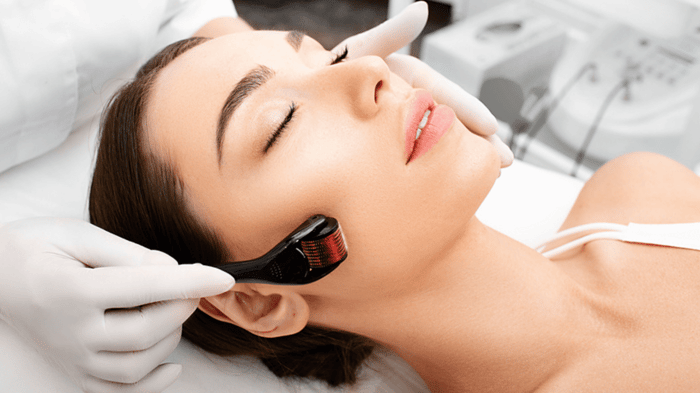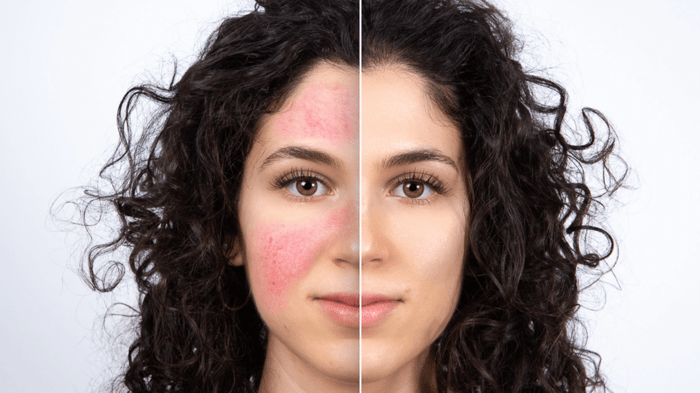By Christine Steele

Thick, luxurious hair is something that both men and women desire. But what if you have thinning hair? The good news is, beautiful, healthy-looking locks are not out of your reach.
Read on to discover what causes hair loss, how much hair loss is normal, and how you can stop or prevent hair loss and even stimulate new hair growth!
Book your free hair loss consultation today!
How Common is Hair Loss?

Many people think hair loss only affects men, but hair loss in women is much more common than you think.
According to Cleveland Clinic, “more than 50% of women will experience noticeable hair loss” in their lifetime.
Hair loss occurs naturally as part of the natural balance as humans regularly shed hairs while new hair grows in.
But how much hair loss is normal and what happens when that balance is thrown off?
Humans typically shed up to 100 hairs a day. But if you are shedding more than that, your hair loss can become noticeable.
Hair loss also becomes more noticeable as we age, since our hair grows more slowly as we grow older, explain the experts at the American Academy of Dermatology Association. Eventually, our hair follicles can stop growing hair, and that’s when we’ll notice the hair on our scalp thinning.
The medical term for excessive hair loss is “alopecia.”
Having thinning hair or bald spots can negatively affect your self-image and self-esteem according to a study in the American Academy of Family Physicians.
But don’t panic! Hair loss is not something you just have to live with! There are steps you can take to address your thinning hair.
What Causes Hair Loss?

While hair loss can affect anyone of any age, there are a number of factors that can make hair loss in women more likely to occur, notes Cleveland Clinic.
Hair loss is more likely to affect women who:
- Just had a baby
- Are older than 40
- Are experiencing menopause
- Have had chemotherapy
- Use chemicals on their hair
- Wear tight hairstyles (like ponytails or braids)
While hair loss can be hereditary, Feminia.com notes that other causes can also contribute to hair loss.
Those include:
- Diet. A diet that lacks certain nutrients like iron, copper, zinc, biotin, protein, and Vitamins A, C, D and E can contribute to hair loss.
- Medication. A wide variety of medications like birth control pills, blood thinners, and those that treat high blood pressure, heart disease, arthritis, and depression can all cause hair loss.
- Illness or disease. In addition to diseases that actually cause hair loss, other illnesses can put stress on the body that can contribute to excess hair loss.
- Hormonal Imbalance. Causes can include polycystic ovary syndrome (PCOS), menopause, or even birth control pills.
- Thyroid imbalance. Having an over or under active thyroid can also cause hair loss.
- Hair products. Many hair products have chemicals that actually damage your hair. Avoid sulfates and parabens, notes Medicinenet.com and look for all natural shampoos and dyes.
- Styling techniques. Heat and chemical treatments to relax or curl your hair can damage your hair and cause damage to hair follicles. Once a hair follicle is damaged, it cannot grow new hair. So, go easy on the chemicals, curling iron, flat iron, and blow dryer.
Four Natural Ways To Help Reduce Hair Loss
When you are dealing with thinning hair, you are going to want to address it immediately before the problem gets worse. Here are several natural, at-home options to help prevent hair loss and even reverse it.
Supplements for Hair Loss
- Biotin supplements
- Zinc. This vitamin plays an important role in hair health, according to Healthline. Zinc contributes to tissue growth and repair and keeps the oil glands around hair follicles working properly. Get your daily dose of zinc from these foods: Beef, spinach, oysters, pumpkin seeds, lentils, and wheat germ.
Foods to Help Curb Hair Loss
- Amino acids. These “building blocks” for proteins play a role in keeping your hair healthy, according to WebMD. A diet full of these proteins, which are found in cottage cheese, fish, eggs, seeds and nuts, whole grains, and meat, can help keep your locks looking lovely.
- Fatty, omega-rich foods. Foods high in these healthy fats can boost hair growth and help promote healthy skin, reports Healthline. Found in fish, seafood and certain nuts and seeds, add some to your diet today to keep your tresses flowing.
- Stay hydrated. Water is essential to maintaining good health overall and your hair is no exception. Staying hydrated helps maintain adequate moisture in your hair shaft.
Lifestyle Changes for Hair Loss
- Reduce stress. Believe it or not, too much stress is not only bad for your health, it’s bad for your hair! Yoga and meditation can help you reduce stress. Regular massages can help your body—and hair—relax!
- Scalp massages. A scalp massage once or twice a week can help stimulate blood flow to your hair follicles, notes Medicinenet.com.
- Style and care. Loosen up! Explore wearing looser hair styles to reduce pulling from tight ponytails or braids. Let your hair dry naturally instead of using a blow dryer, and never use hot hair utensils on wet hair.
At-Home Hair Treatments for Hair Loss
- Hair masks. A hair mask can soothe and detoxify your scalp, help prevent hair loss, and even stimulate new hair growth. Femina has nearly a dozen at-home natural ones to try.
- Castor oil. VeryWellHealth says castor oil is an age-old remedy that promotes hair health. It contains vitamin E, which helps "increase blood flow to the scalp to stimulate hair growth, and has anti-inflammatory properties. It also contains omega 6 fatty acids, which promote hair growth.
- Essential oils. These oils have long been used to improve hair look and health, according to Healthline. A wide variety of essential oils can be used to treat hair and scalp conditions and add shine. Give yourself a mini-spa treatment by giving yourself a scalp massage using lavender, peppermint, cedarwood, sandalwood, rosemary, thyme, clary sage, tea tree, ylang-ylang, or lemongrass oil, many of which are available in our online store. Dilute in a carrier oil like coconut, almond, argan, jojoba, or other. Wrap your hair in a warm towel and relax for 10-20 minutes before showering and washing out.
- Recommended products:
- 100 % pure, organic, cold-press castor oil from Kate Blanc Cosmetics for your hair, scalp, and eyebrows. It’s even pure enough for your eyelashes.
- Wild Jamaican Black Castor Oil is praised by thousands of women for helping to thicken, moisturize and grow their hair.
- With more than 2,600 reviews and a 4.4 star-rating, HUM Hair Sweet Hair Gummies contain goodies for your locks, and they taste good too!
- Nutrafol is a powerful supplement that over time has proven to reverse hair loss with new hair growth. While a little pricey, most people say the cost is definitely worth the benefits. Our editor at Be Vivid You actually swears by it!
Professional Hair Loss Treatments
When home remedies aren’t enough, there are a number of professional treatments that can be used to help stop hair loss and stimulate new hair growth.
Low-Level Laser Therapy

Laser Hair Therapy can help those with certain types of hair loss who are in the early stages of their hair thinning. It uses advanced laser energy to slow hair loss and stimulate hair regrowth. Several months of thrice-weekly treatments may be needed before you notice a difference. It is often combined with other treatments for maximum effectiveness. A laser comb is also available for at home use.
OTC and Rx Medications
A variety of topical and oral medications can help address hair loss. Minoxidil (Rogaine) is an over-the-counter topical medication that you apply to your scalp that can help slow hair loss and promote new hair growth. Finasteride (Propecia), available by prescription, is a pill you take by mouth. Both help grow new hair in a matter of months with continued use. Both have their limitations and side effects, notes WebMD, so consult your doctor to determine which is best for you.
Platelet-Rich Plasma

Doctors will use your own blood, after it has been spun in a centrifuge in a lab, to create a platelet-rich plasma protein which is then injected into your scalp. Those who have had this treatment say their hair grows back thicker than before.
Microneedling
Microneedling can be used to stimulate hair growth. The treatment involves having a roller with tiny needles applied to your scalp, which is said to regenerate hair follicles and stimulate new hair growth, according to Healthline. It’s often used in conjunction with another hair loss treatment like minoxidil (Rogaine) or other topical.
Hair Transplants
For more permanent results, a hair transplant can be the way to go. A surgeon will remove a strip of skin with hair from one part of your scalp and transplant it to a thinning or balding area. Talk with your doctor to find out if this option is right for you.
Conclusion
If you are not sure of what is the best method to treat your hair loss, our experts are here to help. Schedule a free consultation with one of our hair loss specialists today.
They can help determine which is the best treatment for you, and you can be on your way to thicker, fuller locks in no time at all!!




